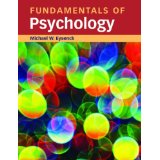Learned Perception
There is evidence that much of the process of perception is learned. Take the case of S.B. described by Richard Gregory in the 1960s.
S.B. was a 52-year-old man who had been completely blind until he received a corneal graft. When he was blind, he had managed to be extremely active, even going for cycle rides with a friend who had guided him with a hand on the shoulder. S.B. had always longed to be able to see and had tried to imagine how the objects he touched would look in reality.
Finally, the operation came. It was a success and he could see. But what could he see? It was not like switching on a television. When the bandages were first removed, he turned in the direction of the surgeon's voice but all he could see was a blur which he realized must be a face. However, within a few days he could walk along the hospital corridor without needing to feel his way. He could even tell the time from the wall clock because he had been used to carrying a pocket watch with the glass removed so he could feel the hands.
He was fascinated with his new ability. He would get up at the crack of dawn to watch the traffic going past and Gregory even took him to the zoo so he could see what the animals actually looked like. He quickly learned to name objects by those features with which he was familiar through touch, and even some objects he had never touched - such as an elephant at the zoo - turned out to be much as he imagined it. In fact, S.B. named the elephant at first sight.
On the other hand, his depth perception was extremely strange. In hospital, he thought that if he lowered himself from the window with his hands, his feet would touch the ground. He had to be stopped from doing this because the window was actually 10 metres (over 30 feet) above the ground! But if he was already familiar with objects through touch, he could estimate sizes and distances quite accurately.
Richard Gregory was surprised by S.B.'s reading ability. S.B. never learned to read properly by sight although he had mastered braille. But he could recognize capital letters and numbers at once! He never learned to read more than a few words, though, because he had great difficulty in learning the lower case letters. It seems that his ability to read capital letters resulted from being given wooden blocks with raised letters to feel at blind school.
This raises interesting questions about how we combine perception through the different senses. Clearly, our brains do not keep the information from each sense in a separate compartment. The example of S.B. indicates that a blind person accumulates a lot of information about objects that he or she cannot see through touch and also what other people say about those objects. This gave S.B. enough background information to identify objects from very subtle cues.
The process for an adult who sees for the first time is quite different to that of the baby with no prior, learned knowledge of the world.

Fundamentals of Psychology

Psychology
